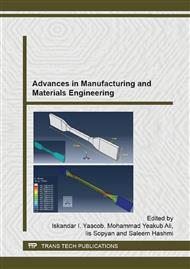p.527
p.531
p.535
p.539
p.543
p.549
p.555
p.560
p.564
Microelectrode Design for Particle Trapping on Bioanalysis Platform
Abstract:
Microelectrode geometry has significant influence on particles trapping techniques used on bioanalysis platforms. In this paper, the particle trapping patterns of dipole, quadrupole and octupole microelectrode using dielectrophoretic force (DEP) are discussed. The microelectrodes were constructed on a metal-insulator-metal platform, built on a silicon nitride (Si3N4) coated silicon substrate. The back contact is made from 20 nm nickel-chromium (NiCr) and 100 nm gold (Au) as the first layer. Then, SU-8-2005 (negative photoresist) is used on the second layer to create microcavities for trapping the particles. The third layer, where the three geometries were patterned, is made from 20 nm NiCr and 100 nm Au layers. Prior to fabrication, the particles trapping patterns of the microelectrodes were profiled using a finite element software, COMSOL 3.5a. Trapping patterns for the three geometries were evaluated using polystyrene latex microbeads. Results from the experiment validate simulation studies in term of microelectrode trapping ability up to single particle efficiency. It provides the potential of converting the trapping platform into a lab-on-chip system.
Info:
Periodical:
Pages:
543-548
Citation:
Online since:
July 2015
Authors:
Price:
Сopyright:
© 2015 Trans Tech Publications Ltd. All Rights Reserved
Share:
Citation:


